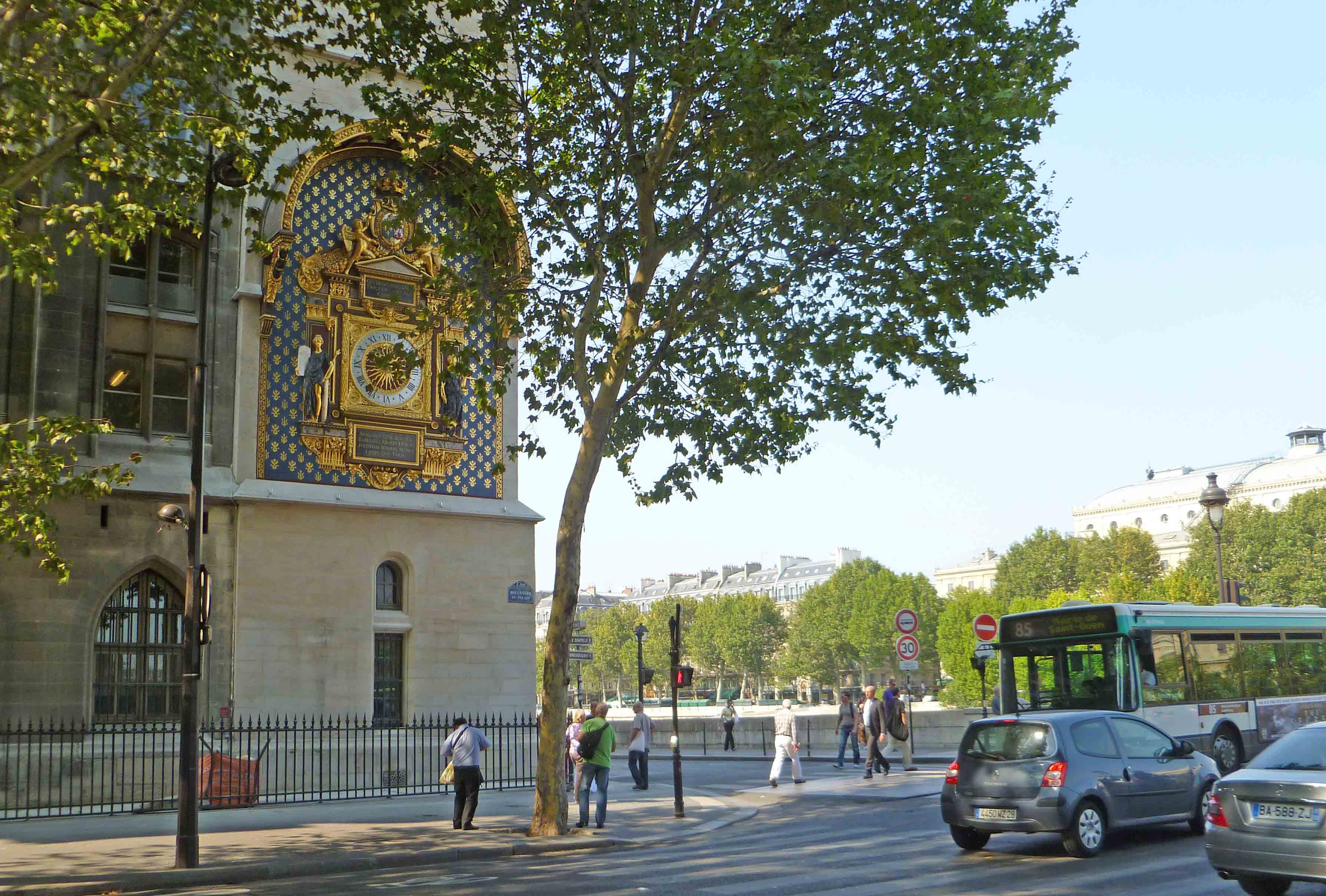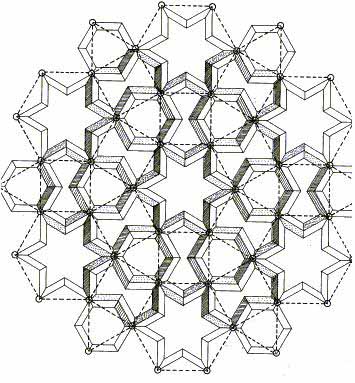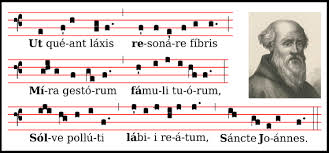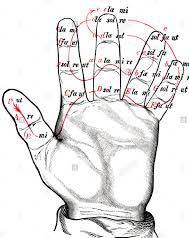
The Conciergerie clock in Paris
The Middle-Ages
Important Steps towards Digitization
Main references :
Duby G. : Le temps des cathédrales. Gallimard 1976. éal,
1950.
Follet K. : Les piliers de la Terre. Original 1989. Traduction Le
livre de Poche. (It's fiction, but firmly grounded on history)
Le Goff J. : Les intellectuels au Moyen Age. Seuil 1957.
Lehmann H : La révolution digitale en musique. Allia 2017.
Panofsky E. : L’œuvre d’art et ses significations.
Gallimard 1955 – 1969.
Panofsky E. : Architecture gothique et pensée scolastique.
Editions de
minuit, 2004.
476 - 1492
Hierarchical organizations express themselves as well in political structures as in intellectual contraptions (theological "summae"). They manage and crown the intense activity of universities, dealing with all the "arts". The arts themselves find their synthetical order in the large city cathedrals. [Panofsky, 2004], [Duby, 1983] or even, on a fiction form, The Pillars of the Earth [Follet, 2007]). But, in spite of this strong polarization, universities emerge as large and free generative spaces. In some measure, they remain independent of feudal and religious authorities.
The clock, built in 1370, is one of the most beautiful machines of this time. Its figures also as a work of art, admirable for its complexity as well as for its precision. The Paris visitors can see a testimony of it in the motto below the Conciergerie clock :
"Machina quae bis sex tam juste dividit hora, justitiam servare monet legesque tueri"
(This machine that, two times six, divides so justly the hours, teaches us to serve justice and protect the law.)
Dante also celebrates tshe clock in his Divina Commedia : "Then as a clock which calls us, at the time when the God's spouse arises to make matins to her man to love, whereas a part draws and pushes another one, ringing and tinking in tones so suave that the prepared mind swells with love; so saw I the glorious wheel move and tune its voices in a softness that you cannot know but where joy plays for ever".
Writing, Literature and Text
Text is in strong demand from the University and its thousands of students who demand texts. And more and more long texts, notably with the Summae, couting their pages by thousands. That leads to textual copy more productive that the "meditative" copy of the abbeys. [Panofsky, 2004]. That pushes to more efficient copying techniques that the sacralized and illuminated religious manuscripts. Even the fonts have to be simpler, and that paves the way to the movabe characters of Renaissance.

Islamic ornament : generativity
Music


Digital aspects of music progress with the neumatic scoring (Gregorian chant)
and the bars, by Guido d'Arezzo (around 1026).
See mainly [Lehmann] pp. 69-81. That will
not be so easily accepted par Catholic authorities, and, in 1324, the "rule
music" is forbidden by a papal bull, which fortunately will be quite
rapidly forgotten. Lehmann sees there the basis of all music totation in the
centuries to come, with the top reached during the 18th centuy.
But a more generative approach is taken by Guillaume Dufay in Nuper rosarum
flores (1436), an isorhythmic composition based on the ratios 6:4:2:3,
corresponding to those of Firenze duomo (according to [Edwards]).
Combinatorial techniques are proposed in 1461 by Jean
Meschinot with (rudimentary) stochastic generator of music for his poem
Litanies de la vierge, subtitled "A prayer that can ge said
by eight or sixteen lines, as well on reverse order than anyway else. See
(in French) [Bootz, 2006] and notes MSH
Paris Nord.
We see even a first attempt to algorithmic music generation: in 1026, Guido
d'Arezzo, besides inventor of bar in musical scoring, has the idea of a composition
associating a pitch to each vovel. [Edwards,
2011].
Painting and Sculpture
Le Goff (Les intellectuels au Moyen-Age, Seuil 1957) notes that the scholastician aesthetics sticks to the representational model of beaudy, so strongly impeding plastic arts to explore less realistic views.
Graphical representations progress , for example with the schemes of Villard de Honnecourt. (See online comments on them by Viollet-le-Duc). But the Aristotelian syllogism and logic in general offer a proposition generative system. And the algorithms (Gerbert) give "automatically" computed results. Arts take profit of this line of thought, as prove for example the "alicatados" in Grenada's Alhambra or the Seljukid mosaics.
Villard de_Honnecourt, an architect, in his collecion of sketches, may be considered a forerunner in modelling.
Giovanni Fontana builds an ancestor of modern "caves" with his Castellum Umbrarum (1420). Lioret p.116.
Theophilus, Schelula diversarum artium" circa 1120.
As for painting, a first idea of perspective is elaborated by Alhazen (see Hans Belting, Florence and Bagdad, Gallimard 2012).
Paris ACM Siggraph, the French chapter of ACM Siggraph, worldwide non-profit organization of computer graphics.

Les Algoristes, an association of artists using their own algorithms in their work.
